Scar Tissue: Symptoms, Treatment, And How To Manage Pain
Get your roadmap to living well with solutions for a life free of the impact of scars.
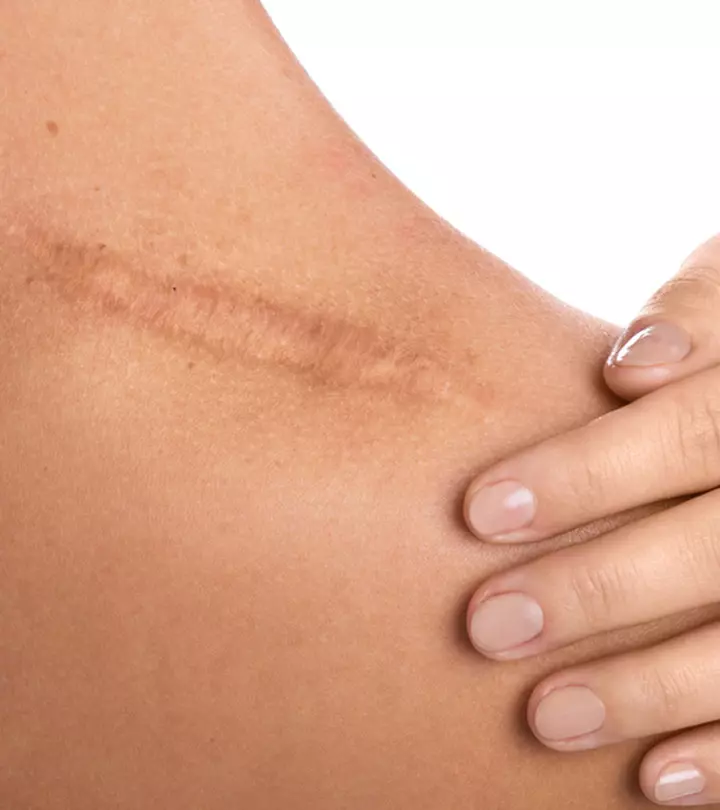
Image: Shutterstock
It is natural for the human body to create scar tissue due to physical injuries. The body naturally strives to repair the wound by developing this sort of tissue, be it internal scarring from a physical injury, like wounds, burns, acne breakouts, or the leftovers of scar tissue after surgeries.
Scars fade away on their own for most people. But for some, the scars may last long and make you feel self-conscious. This article will go through all there is to know about scar tissue, from its formation to its consequences. If you want to know how to get rid of scar tissue, keep reading!
In This Article
What Is Scar Tissue?
Scar tissue is the fibrous tissue that develops at the site of an injury. It differs from regular tissue as it is relatively new and initially softer. Over the course of the healing period, it can become thinner and break down easily.
The following steps result in the formation of scar tissue (1):
- When you are injured, your body’s first response is inflammation. This allows the body to naturally get rid of bacteria and other foreign substances. You may notice the area swell up as a result. You must be careful during this period, as disturbing this area can cause further damage.
- After this comes the stage of increased blood flow. This is beneficial to the healing process as it brings nutrients to repair the tissue.
- The next stage is when the fibroblasts and collagen kick in. These skin tissues and proteins are essential for rebuilding damaged tissue. This is when the structure of the skin begins to form, which determines the outcome of the scar.
- The last stage is the maturation phase. During this, the collagen solidifies, matures, and shrinks. This final phase can take quite a while.
Sometimes, an increase of collagen during this healing period can lead to scars that form beyond their boundaries. This can result in scarring that appears to be excessive in its growth.
Scar tissue can take different forms, like (1):
- Keloid Scars: These are raised, red-colored bumps that are left after an injury.
- Hypertrophic Scars: These are similar to keloid scars but usually fade away with time and are not as big.
- Contracture Scars: These scars are commonly the result of burn injuries. Here, the tissue is pulled at the edges, which creates a contracting feel. A contracture scar may impair movement.
There is no exact cause for scar tissue formation – it can happen to anyone. It can also be inside the body due to internal damage or surgery, e.g., in the lung from cancer or the abdomen after surgery.
We now know how scar tissue forms, but how does it cause pain? Keep reading to know more.
Key Takeaways
- The fibrous tissue that grows on the site of an injury is known as scar tissue.
- Scar tissue treatments are difficult to perform at home, but you can use vitamin E and onion extract as home remedies to ease pain and suffering.
- Consider professional scar treatments such as cryotherapy, radiotherapy, laser therapy, silicone treatments, pressure therapy, vibration devices, corticosteroids, interferon, bleomycin, and mitomycin C to observe significant outcomes.
- Scar tissue pain can be managed with physiotherapy, pain-relieving lotions, continuous moisturization, and vibration devices.
Scar Tissue Pain
The wound healing process can take quite a while since the body has to rebuild the damaged tissue. The new scar tissue that replaces it can initially be very soft and elastic. But over time, if more and more collagen accumulates in the area, the extra tissue may restrict the surrounding area and even cause pain.
In the initial stages of healing, you may not feel the pain due to medication or damaged nerve endings. But as it begins to repair, you may become more aware of the area. Even during the healing process, you may find it uncomfortable or tight as the tissue rebuilds.
Interestingly, the real scar tissue pain may arise long after the site has healed. The pain may be caused by prolonged inflammation as well. There is also a chance of developing abdominal adhesions. This is when the scar tissue forms between the abdominal organs. It can be painful and harmful (2).
Now, let’s talk about all the ways scar tissue affects your body.
Scar Tissue And The Ways It Can Affect Your Body
Scar tissue may hamper movement and cause pain. It can also seem aesthetically unpleasing to some people.
In fact, research has noted that people with scars are more likely to feel depressed or anxious and feel a strain in social interactions (3).
McKenzie Cunningham, a blogger, shares how his current scar tissue was different from his childhood scars. He adds that these scars leave behind physical tightness and emotional weightiness. He explains how he faced a complication in one of the surgeries that left behind a prominent scar on his abdomen. He wrote, “But today, my C-section wannabe scar throbs dully all the time — a less cool version of Harry Potter’s lightning bolt scar. And even when it’s not that tight or achey, I can feel it (i). ”
If you are wondering what scar tissue pain feels like, keep reading the next section.
Symptoms Of Scar Tissue Pain
Scar tissue pain can differ between individuals and types of wounds. Some people may not feel anything, while others may notice the following symptoms in exterior scar tissue:
- Swelling
- Redness
- Itching
- A throbbing feeling in the surrounding area
- The scar and the surrounding skin is sensitive to touch
- Tightness and restriction of movement
- A creak-like feeling or sound whenever you move
If the scar tissue is internal, it may be harder to identify until you get it checked. But, you may notice the following:
- Tightness and restriction of movement in the site.
- Pain or an uncomfortable feeling in the area when moving.
- The surrounding area may also ache and feel stiff.
If you are wondering how to prevent scarring in the first place, it is crucial to be mindful of how the wound feels and consider and examine every itch, pain, and tightness. However, if pain is your primary concern, you can try the following home treatments to get relief from scar tissue pain.
At-Home Treatments For Scar Tissue
Scar tissue treatments are tricky when done at home. They will not give you great results as compared to in-clinic treatments. Regardless, you can try the following home remedies to relieve the pain and discomfort:
1. Vitamin E
Vitamin E is a common treatment for old scars due to its antioxidant and antitumor properties. Though its benefits from topical use require more research, it is still preferred in many cosmetic anti-scar formulations (4).
2. Onion Extract
This is a preventative method for the formation of scar tissues after surgery or tattoo removal. Onion extract has anti-inflammatory and antibacterial properties, which are beneficial for wound healing. It has also been found to provide satisfactory results in topical scar therapies (5).
 Quick Tip
Quick TipWhile home treatments may put your mind at ease initially, they are not strongly backed by scientific research. To see significant results, you should consider getting a professional scar treatment.
Professional Scar Tissue Treatments
Your doctor may recommend any of the following professional treatments to eliminate your scar tissue:
1. Cryotherapy
Cryotherapy
is known to be an effective treatment for managing scar tissue. It works by delivering nitrogen vapor to the scar, which freezes the tissue from its core. It works on the underlying scar tissue to reduce the appearance of scars.
According to some studies, about 51% of the volume of the scar is reduced after just one cryotherapy treatment. Your doctor may suggest this scar tissue treatment in combination with others (6).
2. Radiotherapy
This form of treatment is often used after the removal of scar tissue to prevent another keloid from forming.
Radiotherapy involves using low-level radiation to minimize the growth of collagen and cells in the area. But your doctor must surgically get rid of the scar tissue before using this therapy (7).
3. Laser Therapy
Laser therapy is another method that is often used for external scar tissue treatment. It works by heating the area to reduce scar tissue, pigmentation, and vascularity.
Ablative and non-ablative lasers have both been shown to make a significant difference. However, people with deeper skin tones must take caution due to the risk of dyspigmentation (8).
A survey by the American Society of Dermatologic Surgery among 3,527 adults revealed that 48% of the participants considered light or laser treatment to reduce facial redness and improve skin tone and scars.
4. Silicone Treatments
Silicone treatments provide a wider variety of scar tissue treatment options that do not have to be in-clinic. They can be creams or gel adhesives.
Topical silicone gel treatments or gel sheets have been used for over 30 years in the treatment of scars. Users claim to have observed a reduction in size, color, and firmness of scars after usage. This treatment requires regular use for a period of time to see results (9).
5. Pressure Therapy
This form of scar tissue treatment involves applying pressure on the affected area with the help of dressing. It can reduce the blood supply to the tissue, which helps flatten it. Pressure therapy also helps with scar tissue pain.
However, this method can be quite uncomfortable as you may have to wear the dressing for many hours a day over the course of months (10)
6. Vibration Devices
Vibration therapy can be used as a preventive measure for scar tissue. It may also provide some relief from pain and have a calming effect. The devices involved in this treatment use high-speed vibrations that are claimed to break up scar tissue. Though more research is required to back this up, it has gained decent popularity (11).
7. Corticosteroids
Many prescribe for treating keloids and hypertrophic scarring. Corticosteroids are drugs that are similar to the hormone cortisol. When injected into scar tissue, they help by breaking down the collagen fiber bonds, resulting in reduced scar tissue. They are also used in scar tissue prevention(12).
8. Interferon
Interferon is a more expensive scar treatment. This drug is a signaling protein that can diminish the functioning of collagen, thereby decreasing the size of keloids. Research has found it to reduce scar size by 50% in 9 days (5)!
9. Bleomycin
This type of chemotherapy drug has been deemed safe and effective for keloids and hypertrophic scars. That said, bleomycin causes hyperpigmentation in darker skin types (13).
10. Mitomycin C
This drug is an antitumor agent that has been shown to reduce the chances of keloid recurrence and its size. But research on it is limited, so it is not highly recommended for usage as a scar tissue treatment (5).
It is important to note that despite scar revision treatments, scars do not magically disappear. These interventions aim to improve their appearance and minimize visibility. Check out the next section to know more about the recovery time.
Scar Tissue Treatment Recovery Time
The procedures discussed above involve carefully modifying the existing scar tissue to minimize its visibility. The recovery time after undergoing a scar tissue surgery can vary depending on the extent and location of the procedure done on the body. Typically, you can expect an initial recovery period of a few weeks, during which you may experience some discomfort, swelling, and bruising. After the procedure, it is important to follow the right post-care instructions provided by your healthcare professional. Complete healing and fading of scars may take several months to a year, with the scar gradually becoming less noticeable over time. However, if you notice prolonged periods of pain or inflammation even after 3-4 weeks, immediately consult your doctor.
Now, let’s talk about how to deal with the pain caused by scar tissue.
How To Manage Scar Tissue Pain
Dealing with scar tissue pain and its other side effects can be quite exhausting, especially if you cannot get in-clinic treatment right away. Here are some tips for managing it:
- Physiotherapy: Different types of scars may require different forms of physical therapy. This comprises massages and movements that eventually help break down the tissue and improve mobility (14).
- Pain Relief Creams: You could use topical pain relief gels and ointments to help reduce the scar tissue pain in the muscle. However, this is just a temporary solution.
- Regular Moisturization: Massaging a rich moisturizer into the area may help keep the tissue soft and reduce some discomfort.
- Vibration Devices: As stated earlier, you can try an electronic self-use vibration device to get some relief from scar tissue pain. But, ensure you use the proper techniques to prevent further damage.
Massaging is another way to deal with scar tissues and the pain it causes. Here is what you need to know.
Scar Tissue Massage
Massage therapy can be effective in the management of scar tissue pain. It is to be done at regular intervals over the course of a given time period for positive results.
For the most effective outcome, it is best to use massage therapy in combination with other techniques. Massage therapy varies in its results for scar tissue, but further studies need to be conducted to prove its benefits (14).
 Did You Know?
Did You Know?Physical injury, acne breakouts, or surgery can trigger the body to build new tissues called scar tissues on the site of injury. The building of new and soft tissues can result in symptoms such as pain, swelling, redness, restriction, and tightness of movement. You can use natural ingredients such as vitamin E or onion extract to provide some relief from the pain. If you want to get rid of scar tissues safely, consult your doctor for available treatment options. They may recommend laser therapy, cryotherapy, or medications for the treatment of scar tissue.
Frequently Asked Questions
Will scar tissue lumps disappear?
No, scar tissue lumps will not disappear. However, their appearance can be reduced if treated on time.
Is scar tissue a hard lump?
Scar tissues can have different forms. The smooth, hard lump is a keloid that is formed after a wound or injury.
Check out the following video to understand the nature of scar tissue. The video shares a deeper understanding of the intricacies of scar tissue, the different forms of these tissues, and how they differ from regular skin.
Personal Experience: Source
(i) On scars
https://kenz-cunningham.medium.com/on-scars-d62dbe275488
References
Articles on StyleCraze are backed by verified information from peer-reviewed and academic research papers, reputed organizations, research institutions, and medical associations to ensure accuracy and relevance. Read our editorial policy to learn more.
- Skin scarring
https://www.ncbi.nlm.nih.gov/labs/pmc/articles/PMC1125033/ - Abdominal adhesions: A practical review of an often overlooked entity
https://www.ncbi.nlm.nih.gov/pmc/articles/PMC5295619// - The Psychology of Scars: A Mini-Review
https://pubmed.ncbi.nlm.nih.gov/30439862/ - Vitamin E in dermatology
https://www.ncbi.nlm.nih.gov/pmc/articles/PMC4976416/ - Emerging Therapies for Scar Prevention
https://www.ncbi.nlm.nih.gov/pmc/articles/PMC4593896/pdf/wound.2015.0646.pdf - Intralesional cryotherapy for hypertrophic scars and keloids: a review
https://www.ncbi.nlm.nih.gov/pmc/articles/PMC5965337/ - Radiation Therapy In The Treatment Of Keloids
https://www.ncbi.nlm.nih.gov/books/NBK499973/ - Advances in the treatment of traumatic scars with laser intense pulsed light radiofrequency and ultrasound
https://burnstrauma.biomedcentral.com/articles/10.1186/s41038-018-0141-0 - The Use of Silicone Adhesives for Scar Reduction
https://www.ncbi.nlm.nih.gov/pmc/articles/PMC4486716/ - Effect of pressure therapy for treatment of hypertrophic scar
https://journals.lww.com/md-journal/Fulltext/2019/06280/Effect_of_pressure_therapy_for_treatment_of.105.aspx - Vibration Therapy and Its Influence on Health
https://biomedres.us/pdfs/BJSTR.MS.ID.001406.pdf - Management of Keloids and Hypertrophic Scars
https://www.aafp.org/pubs/afp/issues/2009/0801/p253.html - The treatment of keloids and hypertrophic scars with intralesional bleomycin in skin of color
https://pubmed.ncbi.nlm.nih.gov/25626920/ - Physical Management of Scar Tissue: A Systematic Review and Meta-Analysis
https://www.ncbi.nlm.nih.gov/pmc/articles/PMC7578190/
Read full bio of Dr. Sravya Tipirneni
Read full bio of Arshiya Syeda
Read full bio of Ramona Sinha
Read full bio of Monomita Chakraborty





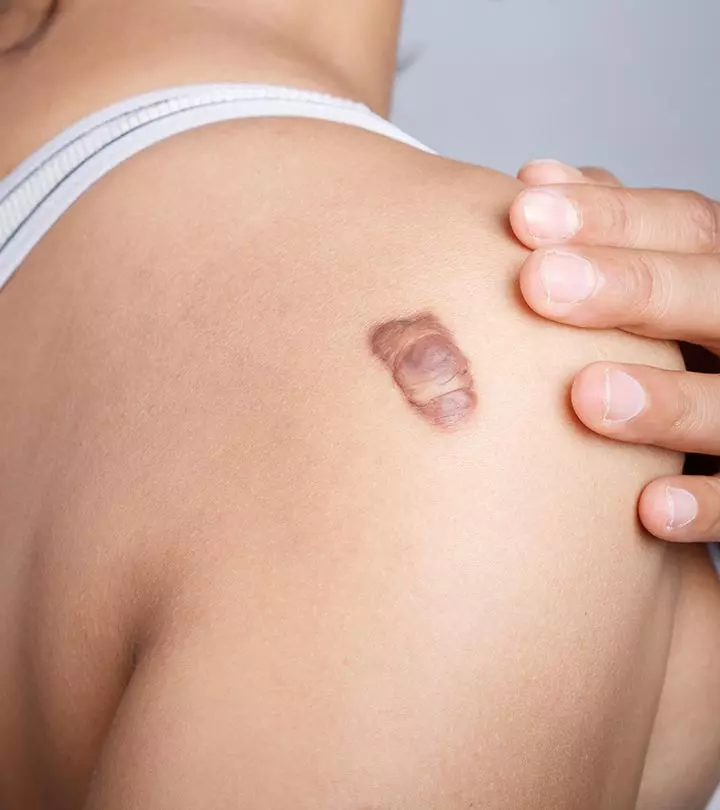



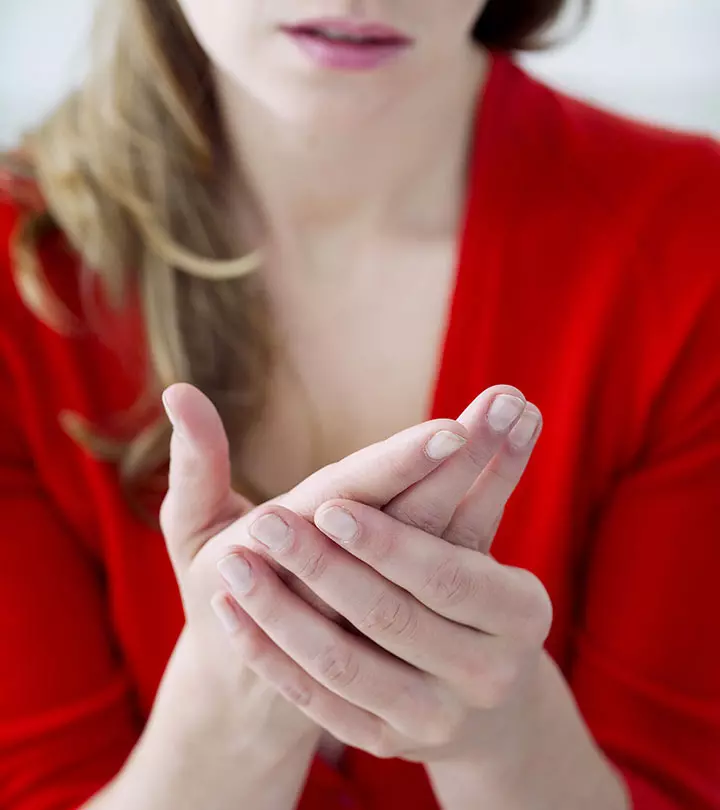

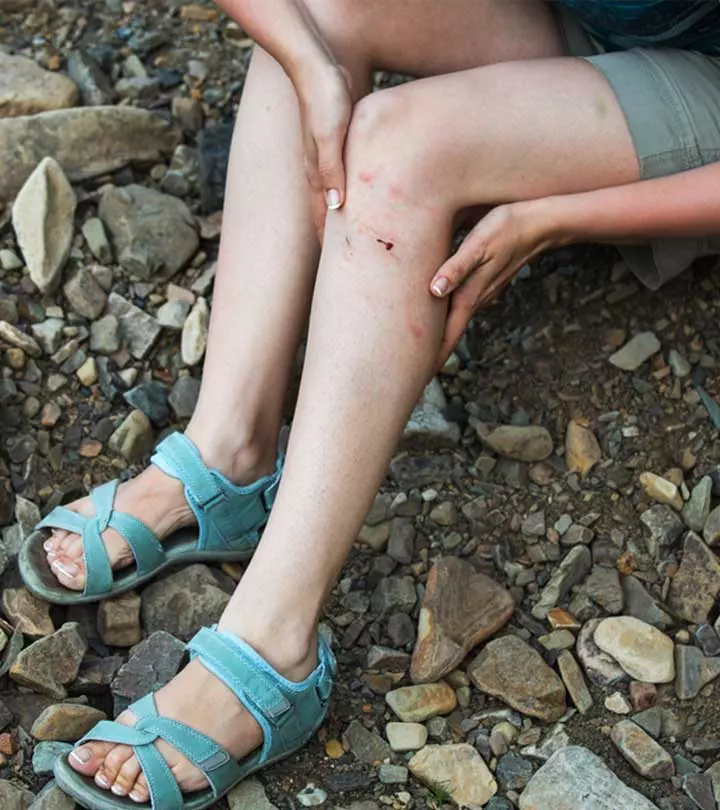


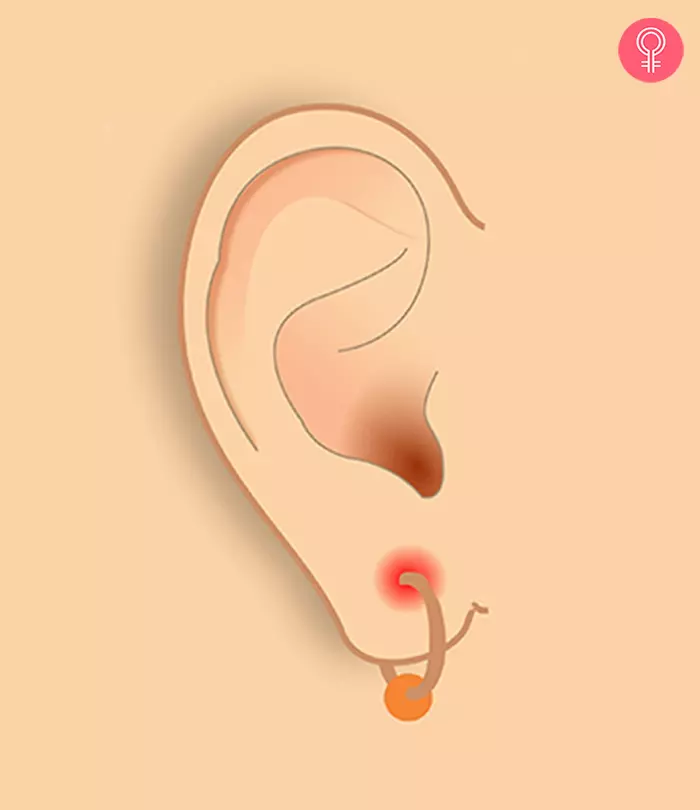

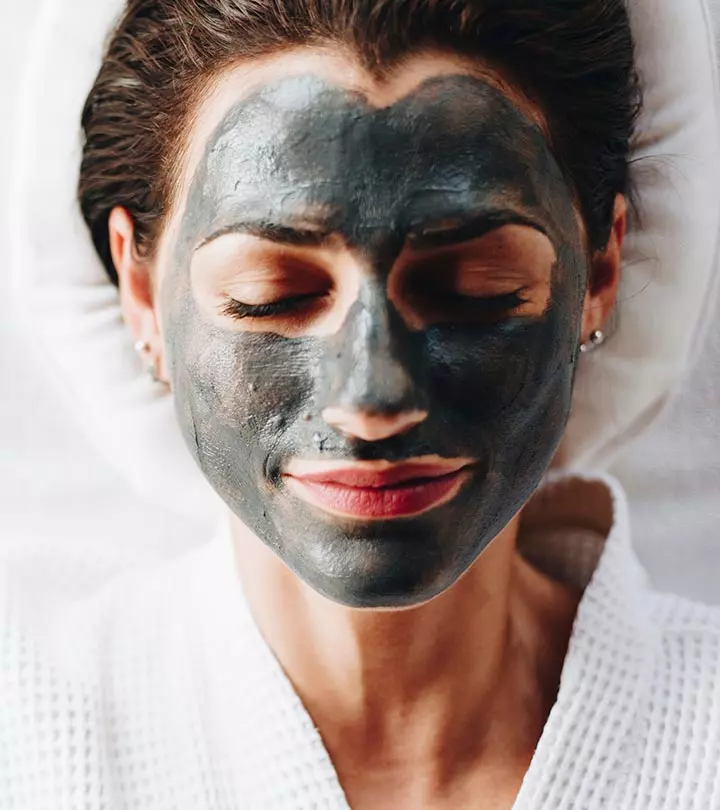



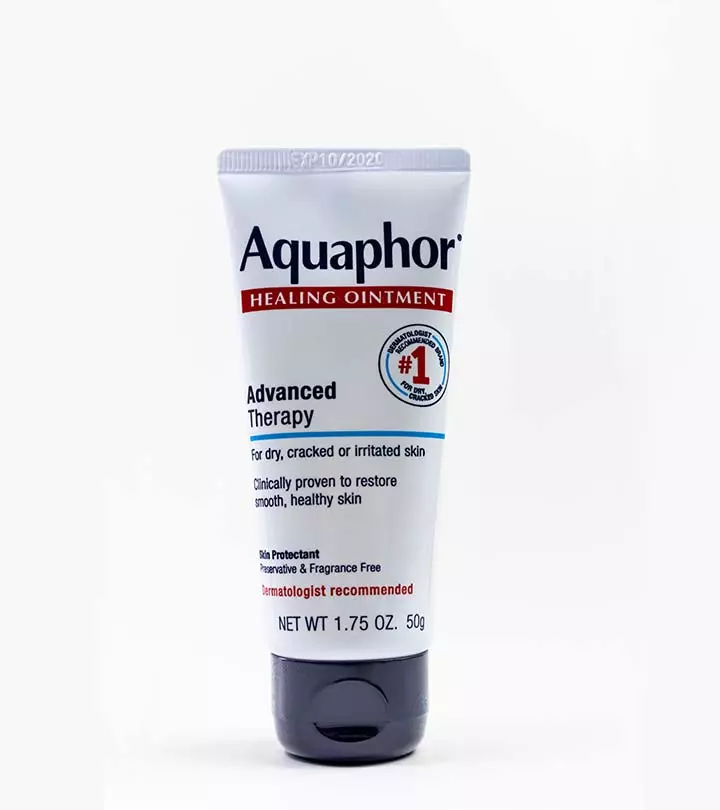






Community Experiences
Join the conversation and become a part of our empowering community! Share your stories, experiences, and insights to connect with other beauty, lifestyle, and health enthusiasts.